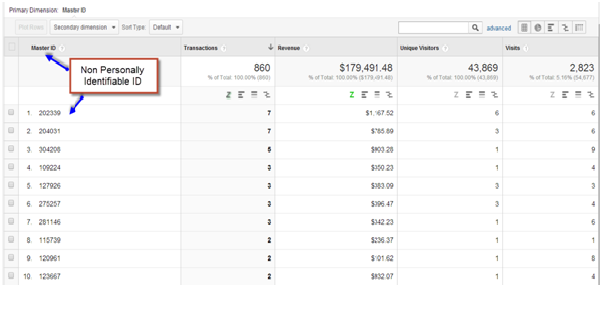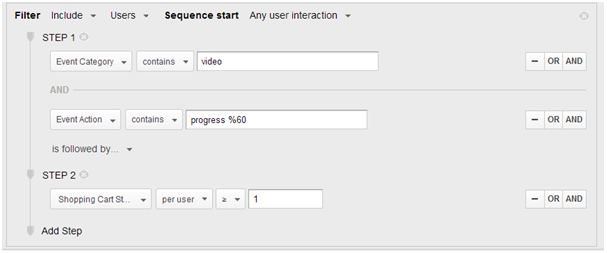Hello there Internet Marketers! Today I have an analytics guru and founder of Analytics Ninja LLC with me. Yehoshua is a master of both Google Analytics implementation and analysis! He’s known for diving deep into GA data to reveal actionable insights. He is a savvy and accomplished SEM specialist, utilizing a range of online marketing tools, technical knowledge, and insight to improve customers’ ROI. He has also spoken at SMX Israel and SES London.

Related Posts:
Interview with Rand Fishkin of @Moz
Interview with Ann Smarty Owner of @Myblogguest
Q. In the scenario below, will the user be considered as unique visit and will the conversion be attributed to TV ad? Multi-device tracking is bit complex to understand, can you give an example to make it simple. Is IP address a part of tracking multi-device? How accurately can Universal Analytics track/report in this regard?
| Visitor Scenario | Source | Device | Browser | Conversion |
| 1st Visit | Watch TV ad & visit site | Tablet | Chrome | No |
| 2nd Visit | From office the visitor visit using his laptop & register. | Laptop | Safari | No |
| 3rd Visit | Visitor visit again and buy product | Mobile | Dolphin | Yes |
A. There are number of Digital Analytics Platforms that support tracking users across multiple devices, including Universal Analytics (the newest version of Google Analytics). Each platform does it in its own way. Generally speaking, the IP address is not a part of tracking a user over multiple devices. The IP would not be a good indication of a unique user; just picture how many folks are on the same IP address over the WiFi at a Starbucks.
Cross Device measurement is done by mapping a client ID (such a browser cookie) with a unique user ID (which is done at login). The key element is that the user needs to be logged in. To the best of my knowledge, Universal Analytics requires for the user to be logged in at some point during their visit in order to enable the cross device tracking feature.
1st Visit - TV Ad leads to site visit.
In order to connect the TV Ad to the site visit, the advertiser will need to use some form a trackable URL in their ad, such as a vanity URL. Otherwise, there is no way for the digital analytics platform to know that the user was impacted by the offline view of the TV ad. (There are advanced methods that large advertisers can use to indeed measure the impact of TV ads to their bottom line; I recommend reading Chapter 12 of Avinash Kaushik's Web Analytics 2.0 for a great discussion of Media Mix Modeling).
So, we'll move forward assuming that the advertiser used a trackable URL and that the user entered that URL into their Chrome browser in order to visit the site.
Since the user did not authenticate (register) from that browser, we will not be able to attribute the user to the TV ad with universal Analytics.
2nd Visit - Safari on Laptop
Since the user registered during this visit, Universal Analytics will be able to map the logged in visits from Safari with that User's ID (on the condition that the website owner passes that ID to Universal).
3rd Visit - Mobile Device w/ Conversion
With Universal Analytics, most Standard Reports will report that this was the source of conversion (Last Touch Attribution), while the Multi Channel Funnels and Attribution Modelling reports will be able to attribute credit for the conversion to the 2nd visit (Safari on Laptop) assuming that they logged in as a part of their purchase process.
Q.While creating reports from the multi-device tracking, how do we successfully create “’Retention reports’?” For example, we may want to see how many people make a purchase (initial goal) and then for how long they continue to make purchases (subsequent goals).
A.I am not aware of any "out of the box" Retention Reports as you described available for Universal Analytics at this time, however I definitely expect the GA team to roll those out this year based upon their furious pace of product development.
That said, it is possible to leverage GA today to create these sorts of reports. By pushing a non personally identifiable unique ID into a Custom Variable or Custom Dimension, you'll be able to see users who make multiple purchases.

Q. Many third-party products (lead management tools) are still using UTM cookies and feed data (like lead source, visitor path etc.) into their system. What’s your advice to those companies moving forward?
A.I would recommend that companies create their own cookies that capture referral sources that mirror GA's current cookies (or improve upon them by storing multiple touches). GA's order of operations for determining what data is stores in its cookies is not hard to replicate. A switch to Universal Analytics should never mean that 3rd party systems fail.
Q. How do we create segment retention reports in Google analytics to get deeper insights of how different customers engage with our content and products? If you have any pre-made segments, please share with us!
A. I really like the new "user segmentation" capabilities in Google Analytics. In particular, I find that the Sequence feature can lead to some really powerful insights. For example, how many users who watch more than 60% of a particular product video then add that product to their cart (even if the 'add to cart' is on a different day).

Q. What is the future of Google Analytics or any other analytics software for that matter? Which new metrics do you forese being part of future web analytics platforms?.
A. I foresee Google Analytics evolving into more of a traditional BI tool with a better focus on Customer Analytics. I expect to see new Retention Reports and Cohort Analysis. I believe that even better merging of data from 3rd party sources will be available. My hope is for better capabilities for reprocessing historical data though I don't envisage that happening in the near term. That last point remains an area where other platforms have a competitive advantage over GA.
Q. What are your most important Key Performance Indicators for calculating ROI through social media?
A. Google has research that shows Social Media is involved in the Awareness and Consideration phases of a Customer's Journey to Purchase. Since the "consideration" phase, especially, is very tied to user sentiment, I would look towards tools that measure sentiment in the social space and create KPIs based upon positive sentiment. That said, don't loose site of the fact that one also needs to apply general metrics to Social Media. Namely, do Social Channels lead users to the website and do those users buy products or services.
Q. What tips you share with us to help us understand attribution modelling?
A. That's a really big question. The best answer I have is to direct folks to this excellent post by Avinash Kaushik. While it is a fairly long read, it is very well written and explains a very complex topic in very clear language.
Thank you very much Yehoshua for taking the time out of your busy schedule to answer my questions. Your answers will definitely help Internet marketers and analytics savvy people.
Please leave your comments below as I would love to hear from you!
If you’re interested in reading more SEO expert industry interviews from TechWyse, please visit SEO Expert Interviews by TechWyse Internet Marketing.






